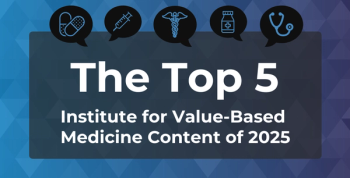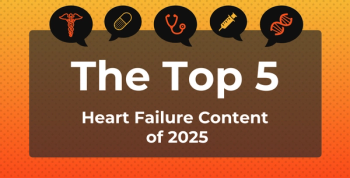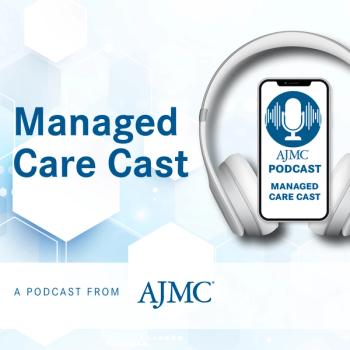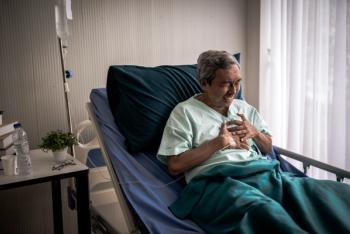
Improving Menopause Care for Indigenous and Hispanic Women: Lisa Taylor-Swanson, PhD
Different cultural, linguistic, and systemic barriers could impact how Indigenous and Hispanic women access menopause care, said Lisa Taylor-Swanson, PhD.
At
Cultural taboos, language differences, and limited inclusion in research contribute to
This transcript has been lightly edited; captions were auto-generated.
Transcript
What are the main barriers Indigenous and Hispanic women face when trying to access menopause care and symptom management?
I think that's such a good question because it's highly relevant. There's barriers that Indigenous and Hispanic women face that are similar as well as different, so I think I'll talk about Indigenous women first.
First off, there's interpersonal—or inside—barriers where women just don't know about menopause. It's highly taboo in a lot of traditional cultures. We've convened a community advisory board of Indigenous women, and they said things like, "Our moms didn't tell us about menopause; our aunties didn't. We talk about a lot of things, but menopause is just something not spoken about." The first barrier is not knowing, "Oh goodness, this is relevant to me; I'm perimenopausal," [or] "Oh, this is relevant to me; I'm now postmenopausal."
The other key thing that Indigenous women face that's a key barrier is many more worse outcomes compared to White women. When it comes to the few studies which have included Indigenous women, compared to not only White women [but also] to other communities as well, they were more likely to report vasomotor symptoms—hot flashes and night sweats—as well as pain.
Third barrier is often Indigenous women are not even included in research studies on the menopausal transition and postmenopause. Our scientific barrier, you might say, is that we don't know very much. We've conducted a scoping review looking at all the scientific literature and the gray literature, so nonscientific literature. We only found 45 papers over the whole—for all of time—regarding Indigenous women and their menopause experiences and outcomes, so there's a lack of scientific knowledge as well.
I think last is really essential—that the menopausal transition for all individuals is very much about what are the symptoms now, but it's equally important to promote current health and well-being as well as promotion of health into the future. Among Indigenous women, there's worse outcomes in terms of cardiometabolic disease, so everything we can do now to help them avoid that transition from metabolic syndrome to type 2 diabetes and beyond is essential, as well as with heart disease. There's a lot of barriers that indigenous women face.
Now, in terms of Hispanic women, there are some similar and different barriers that are experienced. It depends on whether a woman is bilingual or not. We've adapted our intervention into Spanish because, very much like in other cultures, within many Hispanic communities menopause is taboo. It's taboo; it's kind of a secret. We don't really talk about it. Something that's so vulnerable, you might say, needs to be, especially if it's a woman's first language being Spanish, it needs to be in Spanish. Furthermore, when there's health education, even at a very basic, accessible level regardless of language, it's still nuanced. It's still not everyday conversation, so again, it's important if Spanish is a woman's first language, that's important to have this critical health content in Spanish. Language can be a barrier.
One challenge as well can be across communities, but it's certainly something that my Hispanic collaborators have talked about, is that there can be barriers to accessing health insurance. Some people are uninsured or underinsured. How can I get good medical care if I'm uninsured? It's very expensive paying out of pocket, so that can be a barrier as well. Likewise, for Hispanic women across Hispanic communities, there's concern of increased rates of vasomotor symptoms. In the SWAN study, Hispanic women experienced vasomotor symptoms a year or 2 longer compared to White women, so there's this increased symptom burden that's really quite a challenge and quite a barrier to overcome when I feel less well for longer, basically. There's many barriers there.
One thing I want to go back to Indigenous women about is their life expectancy is 20 years shorter than White women here in the United States today. That's not exactly a menopause barrier; it's just a reality that's disturbing and really needs to be made better. We need to have better outcomes for Indigenous women. Their rates of heart disease [and] cardiometabolic disease overall are higher compared to White women, and furthermore, even though the rates of cancer are lower among Indigenous women, their outcomes are worse. More women die of cancer, Indigenous women compared to White women, so that's another key health fact that we need to be aware of: the lack of health and longevity among Indigenous women.
Newsletter
Stay ahead of policy, cost, and value—subscribe to AJMC for expert insights at the intersection of clinical care and health economics.







































